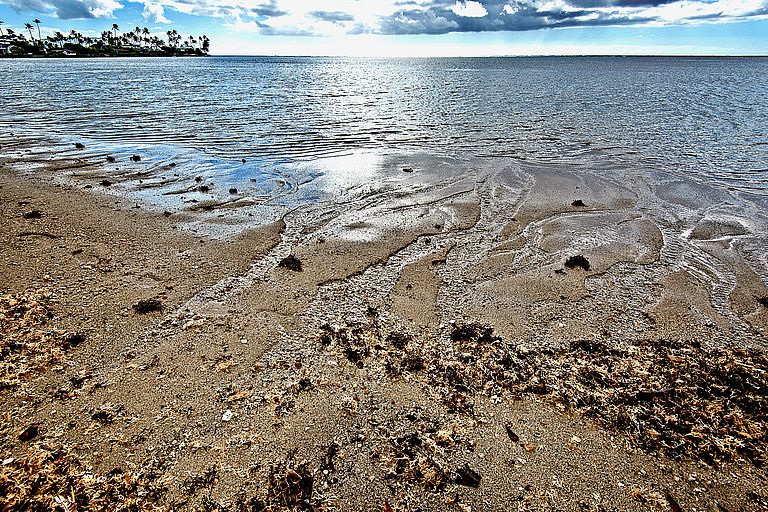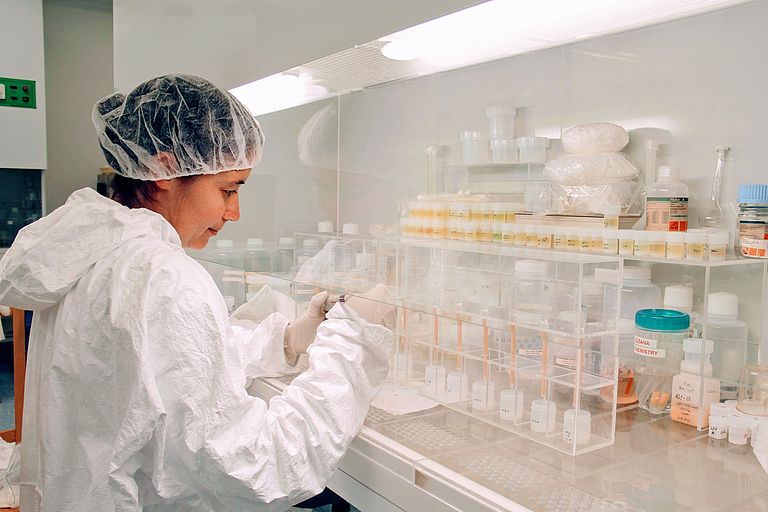Groundwater influences the chemistry of the ocean
Study corrects previous view about element transport into the sea
Rivers do not only transport freshwater from the interior of the continents to the ocean. Sediments and dissolved elements such as lithium, calcium or strontium also enter the sea. The fact that this material influences the chemistry of seawater has been known for a long time and is the subject of detailed studies. But now an international team with participation of the GEOMAR Helmholtz Centre for Ocean Research Kiel has published a study in the journal Nature Communications that shows that groundwater discharge from the coasts to the open sea also has a considerable influence on ocean chemistry and must be taken into account when modelling global material cycles. The findings also have implications for the interpretation of natural archives on the Earth's climate history.
While river mouths are easy to find and sample, groundwater seeps off the coasts are much harder to identify and characterise. “As a result, they have always been a source of uncertainty in modelling global material cycles”, says Kimberley Mayfield, who led the study as a PhD student at the University of California Santa Cruz (UCSC). “Researchers around the world have now made great efforts to obtain more accurate data”.
The international team involved in the study focused on five key elements - lithium, magnesium, calcium, strontium and barium - and measured their concentrations and isotope ratios in coastal groundwater seeps at 20 sites around the world. In addition, it incorporated previously published data into the study.
“These elements are important because they originate from the chemical weathering of rocks. The weathering of silicate rocks leads to a huge uptake of carbon dioxide from the atmosphere over long periods of time”, Mayfield explains. So these are elements that are also very important for understanding the Earth's climate history.
“Our results show that the input of these chemical substances and metals via submarine groundwater discharge into the ocean has always been underestimated due to poor data, whereas the input via rivers has been overestimated”, says Prof. Dr. Anton Eisenhauer from GEOMAR, co- author of the study. “This information is useful for understanding how the weathering of rocks is related to climate not only in the present, but also in the past”, Professor Eisenhauer continues.
According to the study, the amount of the above-mentioned elements that enter the sea by groundwater sources is between five and 16 per cent of what originates from rivers. The results also show that the isotopic composition of the elements from groundwater can differ from those of rivers. The properties of groundwater are strongly dependent on the regional geology of the coastal areas, while river water is more influenced by the interior of the continents.
“It is important to realise that groundwater makes a global difference in terms of material fluxes. Now that we have this large data set, the knowledge about the amount of these fluxes can also be further improved through more sampling and more global and precise SGD models can be developed”, Professor Eisenhauer concludes.
Scientific paper:
Mayfield, K. K., A. Eisenhauer, D. P. Santiago Ramos, J. A. Higgins, T. J. Horner, M. Auro, T. Magna, N. Moosdorf, M. A. Charette, M. E. Gonneea, C. E. Brady, N. Komar, B. Peucker-Ehrenbrink, A. Paytan (2021): Groundwater discharge impacts marine isotopebudgets of Li, Mg, Ca, Sr, and Ba. Nature Communications, https://doi.org/10.1038/s41467-020-20248-3
Please note:
In addition to the USCS and GEOMAR, the Woods Hole Oceanographic Institution (Massachusetts, USA), Princeton University (New Jersey, USA), the Czech Geological Survey, the U.S. Geological Survey and the University of Hawaii, Manoa, were involved in the study. It was supported by the National Science Foundation, the U.S. Geological Survey, the Helmholtz Association and the EU Base Line Earth project.




